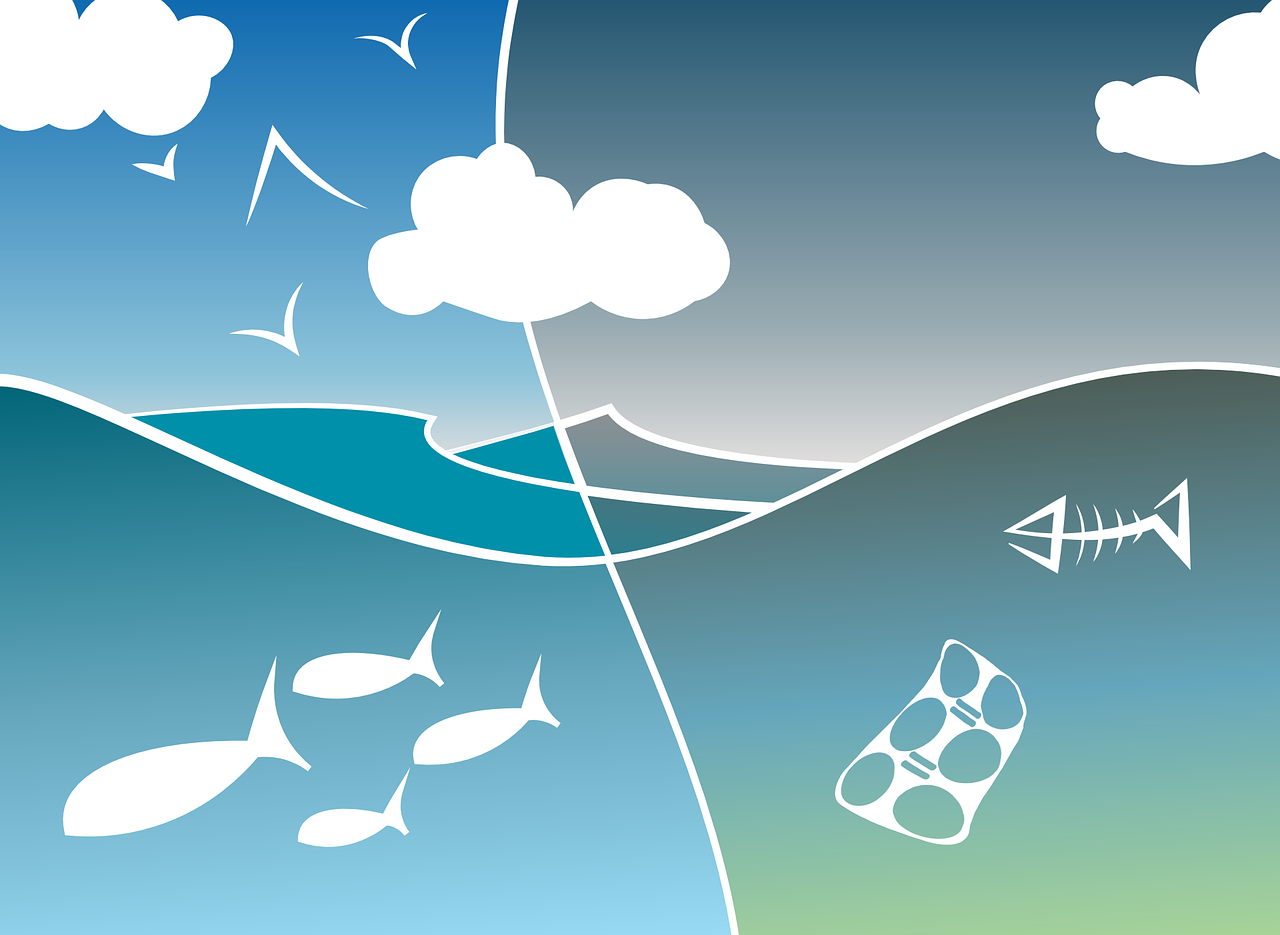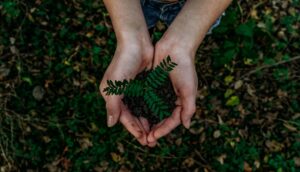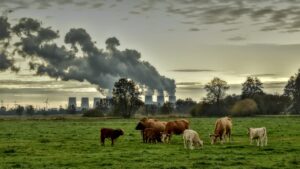How Do Animals Play A Role In Maintaining A Balanced Ecosystem: Introduction
In the intricate web of life, animals play a vital role in maintaining the delicate balance of ecosystems. From tiny insects to majestic predators, each species contributes in its own unique way to the overall health and stability of their environment. Whether it’s through pollination, seed dispersal, or controlling populations of other organisms, animals have an extraordinary impact on the natural world around us. In this article, we will explore the fascinating ways that animals contribute to the maintenance of a balanced ecosystem, and discover the interconnectedness of all living beings in our planet.

Check Out Our Top Eco Friendly Product Picks On Amazon Here
How Do Animals Play A Role In Maintaining A Balanced Ecosystem: Seed Dispersal
1.1 By birds
Birds play a crucial role in seed dispersal within ecosystems. When birds consume fruits or berries, they often swallow the seeds as well. These seeds then pass through the bird’s digestive system, and are later deposited in different locations through their droppings. This process allows plants to colonize new areas, increasing their distribution and genetic diversity. Additionally, some bird species have specialized beaks or bills that help them crack open hard seed coats, aiding in the germination process.
1.2 By mammals
Mammals, such as squirrels, rodents, and larger herbivores, also assist in seed dispersal. As they feed on fruits or nuts, they inadvertently transport seeds to different locations. Many mammals tend to cache food items, storing them for later consumption. However, not all of these cached seeds are retrieved, resulting in the potential for new plant growth. Some plants even depend on mammals to disperse their seeds, as these animals travel greater distances compared to birds, allowing for the colonization of new habitats.
1.3 By insects
Insects, particularly ants and beetles, play a significant role in seed dispersal as well. Certain plant species have evolved to produce seeds with specialized appendages or structures known as elaiosomes, which attract ants. The ants carry these elaiosome-laden seeds to their nests, where they consume the appendages and discard the intact seeds. In doing so, they inadvertently disperse the seeds away from the parent plant, increasing their chances of successful germination and growth.
How Do Animals Play A Role In Maintaining A Balanced Ecosystem: Pollination
2.1 By bees
Bees are the most well-known pollinators, contributing to the reproduction of numerous plant species. As bees feed on nectar, pollen grains attach to their hairy bodies. When they visit another flower of the same plant species, these pollen grains are transferred, leading to fertilization and seed formation. The relationship between bees and plants is mutualistic, as the bees obtain food in the form of nectar while assisting in the plant’s reproduction.
2.2 By butterflies and moths
Butterflies and moths are also important pollinators in ecosystems. Their long proboscis allows them to reach deep into flowers and access nectar. As they move from flower to flower, they inadvertently transfer pollen between plants of the same species. Some plants have even evolved to attract specific butterfly or moth species by producing specialized nectar guides or chemical compounds, ensuring effective pollination.
2.3 By birds and bats
Birds and bats contribute to pollination as well, particularly in tropical regions. Some flowering plants have adapted their characteristics, such as bright-colored flowers or distinct shapes, to attract these specific pollinators. Birds are attracted to brightly colored blooms, while bats are drawn to flowers that emit a strong fragrance at night. As these animals feed on nectar, pollen sticks to their bodies and is transported to other flowers during subsequent visits, facilitating cross-pollination.
How Do Animals Play A Role In Maintaining A Balanced Ecosystem: Pest Control
3.1 Natural predators
One of the crucial roles animals play in maintaining ecosystem balance is pest control. Many predatory animals, such as spiders, mantises, and ladybugs, help control the population of pests like insects and small rodents. These natural predators actively hunt and consume pests, regulating their numbers and preventing outbreaks that can harm plant and animal populations. By keeping pest populations in check, these predators contribute to the overall health and stability of ecosystems.
3.2 Insect-eating birds
Birds that primarily feed on insects also play a vital role in pest control. Insectivorous birds, such as swallows, warblers, and flycatchers, contribute to maintaining the balance of insect populations. They consume large quantities of insects daily, including many pest species. By reducing the number of herbivorous insects, these birds help protect plants from excessive damage and promote their overall growth and survival.
3.3 Bats
Bats are exceptional predators of insects, particularly nocturnal flying pests. Many bat species have a diet mainly composed of insects, including mosquitoes, moths, and beetles. By consuming vast quantities of these insects each night, bats reduce the prevalence of pests that can damage crops, spread diseases, or disrupt natural ecosystems. Their nocturnal feeding habits contribute to maintaining the balance between prey and predator populations, supporting healthy ecosystems.
How Do Animals Play A Role In Maintaining A Balanced Ecosystem: Nutrient Cycling
4.1 Decomposition and scavenging
Animals play a crucial role in nutrient cycling within ecosystems through decomposition and scavenging activities. Scavengers, such as vultures, hyenas, and certain beetles, consume dead animal carcasses, breaking them down into smaller pieces. This process aids in the decomposition of organic matter and releases nutrients back into the environment. Through scavenging, these animals prevent the buildup of decaying material, contributing to the overall health of ecosystems.
4.2 Fertilization
Many animals contribute to fertilizing the soil through their waste products. Herbivorous animals, like deer, rabbits, and elephants, consume plant material and extract nutrients from it. As they excrete waste, these nutrients are returned to the soil, enriching it and providing essential nourishment for plant growth. This process helps maintain soil fertility, supporting the growth of diverse plant communities and sustaining ecosystem balance.
4.3 Soil enrichment
Certain animals, such as earthworms, actively contribute to soil enrichment through their burrowing activities. As earthworms move through the soil, they aerate it and create channels for water and oxygen to penetrate deeper. They also break down organic matter, facilitating its decomposition and nutrient release. These activities enhance soil structure, moisture retention, and nutrient availability, promoting a healthy and productive soil environment for plants.
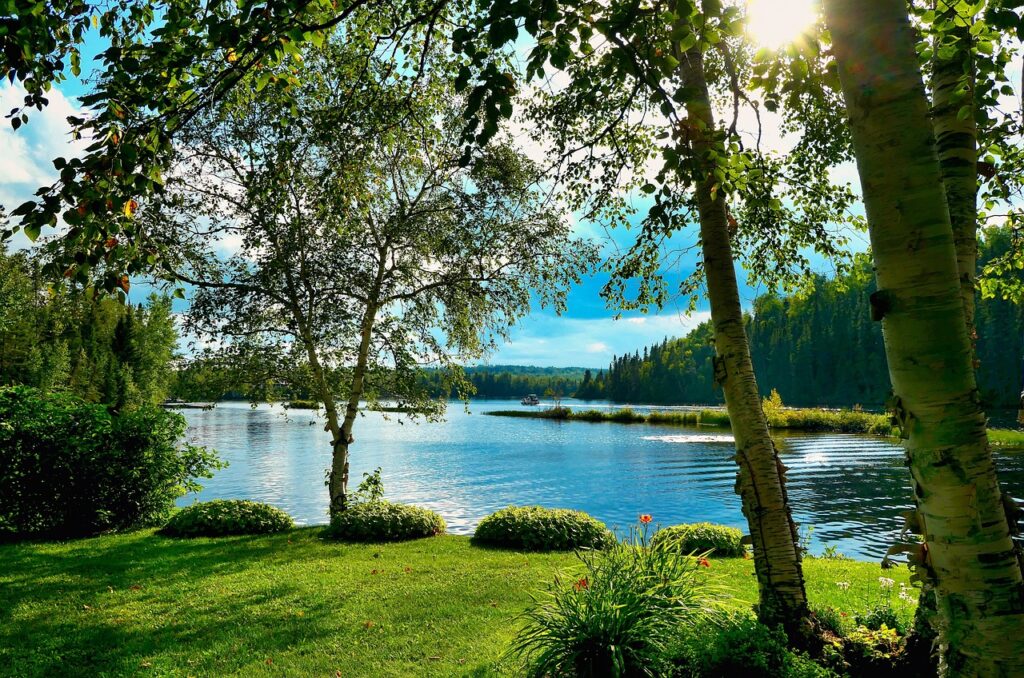
How Do Animals Play A Role In Maintaining A Balanced Ecosystem: Biodiversity
5.1 Keystone species
Animals also play a vital role in maintaining biodiversity within ecosystems as keystone species. These species have a disproportionately large impact on their environment compared to their abundance. For instance, the presence of wolves as a top predator influences the behavior of herbivores, preventing them from overgrazing certain plant species and promoting the diversity of plant communities. The removal of keystone species can have detrimental ripple effects on the entire ecosystem, emphasizing the importance of their role in maintaining equilibrium.
5.2 Trophic cascades
Trophic cascades occur when a change in the abundance of one species impacts the entire food web. Animals can trigger trophic cascades through their behaviors and interactions. For example, the reintroduction of sea otters in coastal ecosystems has been found to cause a cascade of positive effects. Sea otters feed on sea urchins, which are herbivorous and consume kelp. By controlling the sea urchin population, sea otters enable kelp forests to thrive, providing essential habitat for numerous marine species.
5.3 Ecosystem stability
Animal species contribute to the overall stability of ecosystems through their interactions and roles within food webs. When species diversity is maintained, ecosystems can better adapt to environmental changes or disturbances. Animal populations that are in balance with their surroundings help prevent the dominance of any one species and promote the coexistence of diverse plants and animals. This biodiversity results in a resilient ecosystem that can withstand challenges and maintain its functionality over time.
How Do Animals Play A Role In Maintaining A Balanced Ecosystem: Habitat Creation
6.1 Beavers and Wetlands
Certain animals significantly impact ecosystem dynamics by creating habitats. Beavers, for example, are known for their ability to construct dams in freshwater rivers and streams. These dams create wetlands, which provide essential habitat for a wide range of plant and animal species. Wetlands support biodiversity by offering food, shelter, and breeding grounds, as well as filtering and purifying water. The actions of beavers contribute to the overall health and stability of ecosystems by creating diverse and productive habitats.
6.2 Birds and Trees
Birds, particularly those that consume fruits or seeds, contribute to habitat creation through their role in tree regeneration. When birds consume fruits, they often disperse the undigested seeds in different areas, including within the soil or on branches. Some seeds are inadvertently dropped during feeding, leading to the establishment of new trees. Over time, these trees provide shelter and nesting sites, supporting various animal species and contributing to the overall diversity and structure of forest ecosystems.
6.3 Coral reefs
Coral reefs, one of the most diverse ecosystems on the planet, are dependent on the presence of certain animal species. Reef-building corals rely on tiny organisms called polyps, which form calcium carbonate exoskeletons that create the reef structure. Some fish species, known as herbivores, graze on algae that compete with corals for space. By keeping algae in check, these fish prevent it from overgrowing and choking the corals. The balance between these animal species is crucial for the health and survival of coral reefs, which are important for countless marine organisms.
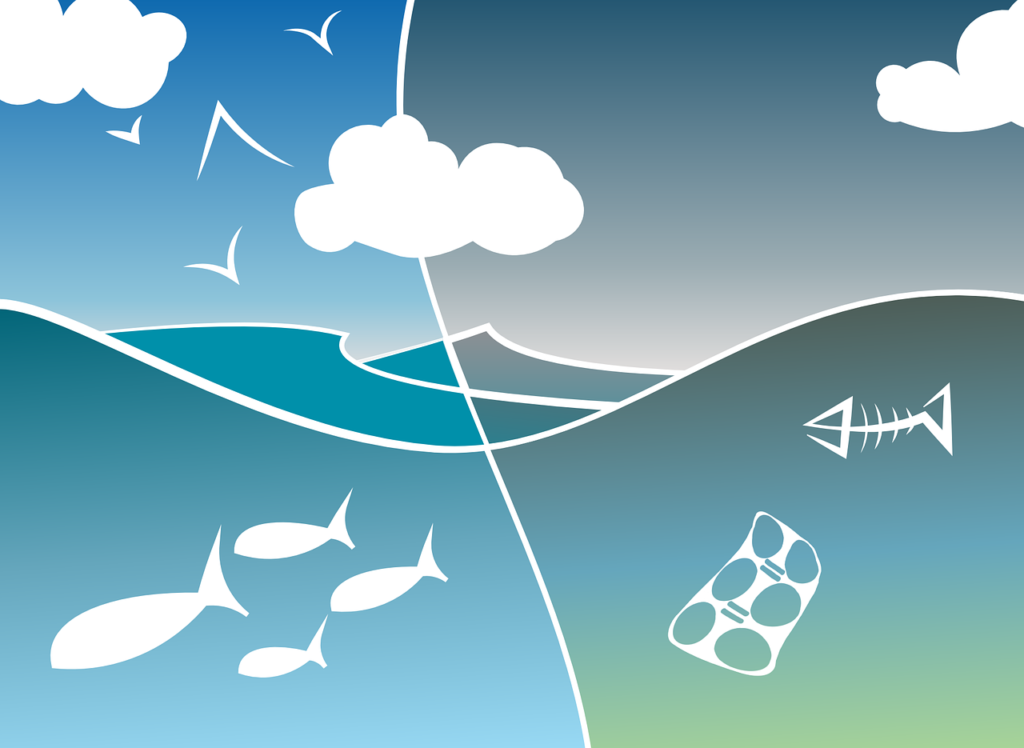
How Do Animals Play A Role In Maintaining A Balanced Ecosystem: Algae and Oxygen Production
7.1 By marine animals
Marine animals, particularly certain types of algae, play a significant role in oxygen production through photosynthesis. Algae, including microalgae and seaweeds, use sunlight and carbon dioxide to produce oxygen as a byproduct. This oxygen is released into the water, contributing to the oxygenation of marine ecosystems. Algae also serve as a food source for many marine animals, further supporting their survival and contributing to the overall health and balance of marine ecosystems.
7.2 By freshwater animals
Similar to marine animals, freshwater animals also contribute to oxygen production through the presence of certain plants, such as floating aquatic plants and submerged vegetation. These plants undergo photosynthesis, producing oxygen that contributes to oxygen levels in freshwater ecosystems. Additionally, the decomposition of organic matter, facilitated by freshwater organisms, can release nutrients that support the growth of aquatic plants, further enhancing oxygen production.
How Do Animals Play A Role In Maintaining A Balanced Ecosystem: Nutrient Transport in Water
8.1 By marine animals
Marine animals play a crucial role in nutrient transport within water ecosystems. Certain species, such as whales and fish, undertake long-distance migrations or travel across different depths of the ocean. As they move, they transport nutrients from one area to another, redistributing important elements like nitrogen and phosphorus. This nutrient transport supports the growth of phytoplankton and other primary producers, forming the base of the marine food chain and sustaining diverse marine life.
8.2 By freshwater animals
Freshwater animals, particularly migratory fish species like salmon, contribute to nutrient transport in rivers and lakes. These fish spawn in freshwater habitats and then migrate to the ocean, where they grow and mature. When adult fish return to their natal freshwater habitats to reproduce, they bring marine-derived nutrients with them. The decomposition of their bodies after spawning releases these nutrients into freshwater ecosystems, enriching the water and benefiting organisms at various trophic levels.
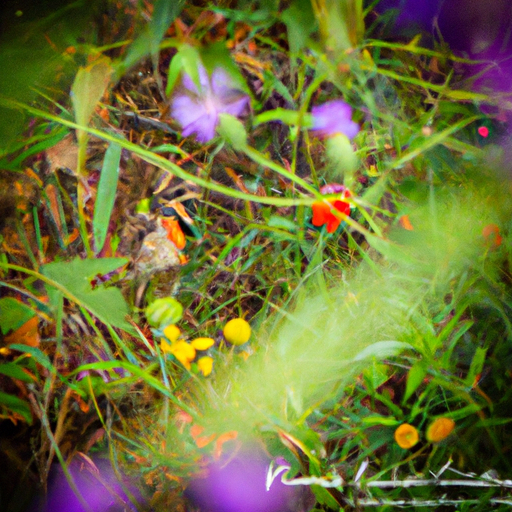
How Do Animals Play A Role In Maintaining A Balanced Ecosystem: Soil Aeration
9.1 By burrowing animals
Burrowing animals, such as prairie dogs, ground squirrels, and gophers, play a crucial role in soil aeration. Through their digging and burrowing activities, these animals create tunnels and burrows that allow air to penetrate the soil. This aeration is essential for the survival of soil-dwelling organisms, including beneficial bacteria and fungi, which require oxygen to carry out vital processes like decomposition and nutrient cycling. By contributing to soil aeration, burrowing animals maintain the health and productivity of terrestrial ecosystems.
9.2 Earthworms
Earthworms are renowned for their role in soil aeration as well as nutrient cycling. As these worms burrow through the soil, they create channels that enhance air circulation and water infiltration. These channels also serve as pathways for plant roots, enabling them to access deeper layers of the soil and obtain essential nutrients. Furthermore, earthworms ingest organic matter and their digestive processes convert it into nutrient-rich castings, adding to the fertility of the soil. Their activities contribute to maintaining healthy soils and supporting the growth of diverse plant communities.
How Do Animals Play A Role In Maintaining A Balanced Ecosystem: Control of Invasive Species
10.1 Natural predators
Certain animals act as natural predators of invasive species, contributing to their control and preventing them from dominating ecosystems. Predatory species that feed on invasive organisms can help regulate their populations and limit their impacts. For example, the introduction of non-native predators, like the cane toad in Australia, has been implemented to control invasive pest species. By preying on these invaders, these predators assist in restoring the balance of native species and ecosystems.
10.2 Herbivores
Some invasive species are plants that can outcompete native vegetation. However, the presence of herbivores that feed on these invasive plants can help control their spread. Herbivores that are specialized to consume and control specific invasive plant species can effectively limit their growth and prevent them from dominating native habitats. These herbivores can reduce the invasive plant’s fitness and reproductive success, supporting the restoration of native plant communities and maintaining a balanced ecosystem.
How Do Animals Play A Role In Maintaining A Balanced Ecosystem: Conclusion
In wrapping up our exploration of the pivotal question “How Do Animals Play A Role In Maintaining A Balanced Ecosystem,” it’s clear that the animal kingdom serves as more than just a biological spectacle; it is a vital cog in the intricate machinery of ecosystems. Each species, whether large or small, predator or prey, contributes to an environmental equilibrium that promotes biodiversity and sustains life on Earth. The roles they play can be as varied as they are critical, each serving as a piece in an expansive jigsaw puzzle.
Pollinators: Agents of Continuity
Animals like bees, butterflies, and hummingbirds do not just bring a flutter of aesthetic joy; they are crucial pollinators. Without their tireless efforts in transferring pollen from one flower to another, many plant species would find it difficult to reproduce. This chain reaction extends to fruits and seeds, which are food sources for other animals and even humans.
Natural Sanitizers: Cleanup Crew
Vultures, hyenas, and other scavengers are often perceived with disdain, but their role in cleaning up dead animals is indispensable. These natural sanitizers help to prevent the spread of disease by consuming the remains that would otherwise rot and breed pathogens. By doing so, they render a service that is nothing short of environmental housekeeping.
Predators: Nature’s Population Control
Apex predators like wolves, lions, and eagles maintain the health of their ecosystems by controlling the population of other animals. Their predatory activities ensure that no single species multiplies to an extent that would deplete resources, thereby preserving the balance of plant and animal life.
Seed Dispersers: Forest Engineers
Animals such as birds and monkeys consume fruits and inadvertently disperse seeds in their droppings. This simple yet essential act leads to forest regeneration and the propagation of various plant species. Their actions quite literally sow the seeds for future forests, which in turn act as habitats for myriad species.
Bioindicators: The Sentinels
Some animals serve as early warning systems. Frogs, with their permeable skin, are sensitive to environmental changes and can signal an ecosystem’s health. Their presence, or absence, can be a clue for scientists to understand how an ecosystem is faring and what steps need to be taken to preserve it.
Ecosystem Engineers: Builders and Shapers
Then there are those like beavers, whose dam-building activities create wetlands—a crucial habitat for various species. These “ecosystem engineers” not only create homes for themselves but also pave the way for other animals and plants to thrive.
A Symphony of Balance
In conclusion, the animal kingdom orchestrates a complex, harmonious symphony that underpins the balance of ecosystems. This synergy is what makes life on Earth not just sustainable but also wonderfully diverse. We have an ethical obligation to protect these natural systems and their animal architects. As we ponder the question “How Do Animals Play A Role In Maintaining A Balanced Ecosystem,” it becomes abundantly clear that each animal, in its own unique way, is a guardian of ecological stability.

